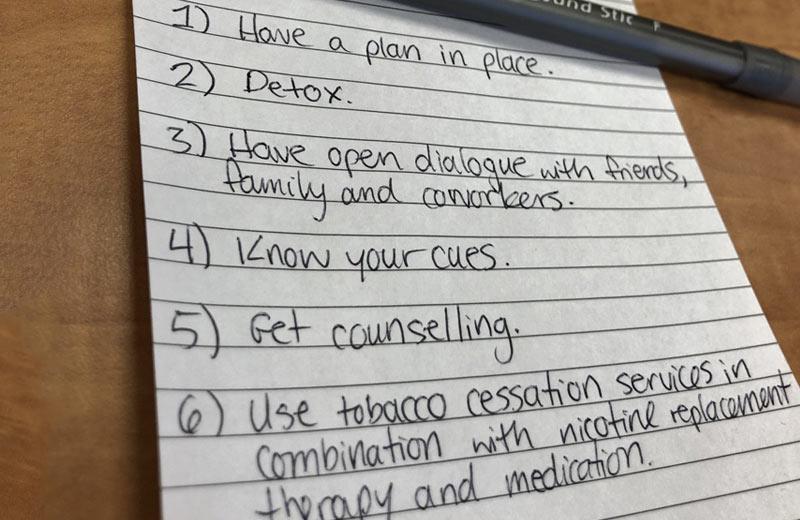Did you know most tobacco users want to quit? Or that tobacco use is the leading cause of preventable disease and premature death in Canada? Yikes!
National Non-Smoking Week is January 19-25, 2020
For National Non-Smoking Week, let’s stop youth and non-users from ever using tobacco and nicotine products, while also helping people who want to quit. This way, we can protect everyone from the harms of second- and third-hand smoke too.
Established in 1977 by the Canadian Council for Tobacco Control, National Non-Smoking Week is meant to provide education and information to Canadians about the dangers of tobacco use and exposure to second and third-hand smoke, while encouraging and supporting those who currently smoke to quit.
Quitting is tough, but so are you!
Remember: nicotine is an addiction that causes our bodies to go through withdrawal when we don’t receive a constant supply. This makes it harder to quit.
Having the right tools, supports, and coping mechanisms in place can help improve your chances of living tobacco-free.
6 ways you can improve your chances of living tobacco and vapour-free:
- Have a plan in place. This is a lifestyle change! Plan for triggers and risky situations to help make sure you stay tobacco-free.
- Detox. Get rid of your tobacco products and ashtrays, both in the house and in the vehicle.
- Have open dialogue with friends, family, and coworkers. This can help keep you on track.
- Know your cues. If you need to hold something in the absence of a cigarette, grab a stick of celery, carrot, fidget spinner, or pen.
- Get counselling. Evidence shows that having a counselor or peer-support group is effective when it comes to quitting.
- Combine tobacco cessation services with nicotine replacement therapy and medication. This combo makes you three to four times more likely to quit.
There are many reasons to quit tobacco products, and quitting can be difficult. If you or someone you know wants to quit or decrease their tobacco use, encourage them to talk to their primary care provider (such as a doctor or nurse practitioner).
These tobacco cessation resources can also be used:
- QuitNow offers free information, support, and counseling by trained professionals over the phone, or by text or email.
- BC Smoking Cessation Program: everyone in BC can access 12 weeks of free nicotine replacement therapy (gum, patch, inhaler, and lozenges) per calendar year through their local pharmacy. Women who are pregnant or lactating are advised to consult with their doctor or pharmacist.
- First Nations Health Authority offers supplementary coverage for nicotine replacement therapy.
Note: In this post, as in most public health messages, “tobacco use” refers to the use of commercial tobacco products like cigarettes and chewing tobacco as opposed to traditional uses of tobacco.














Comments